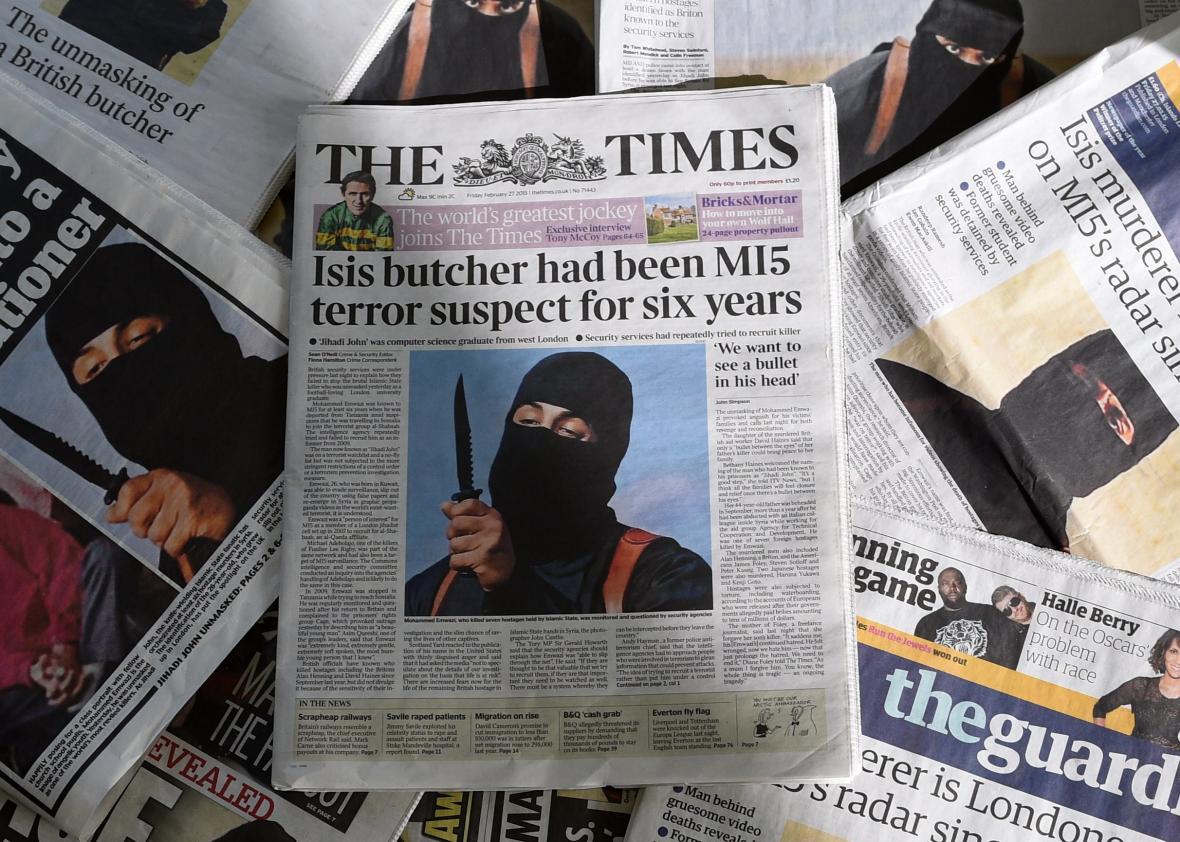The latest issue of ISIS’s official English-language magazine, Dabiq, has hit the Internet and despite some recent battlefield setbacks, the group is taking a triumphant tone, headlining recent attacks in the west and memorializing some recently killed prominent terrorist figures.
A new obituary confirmed the death of Mohammed Emwazi, the British militant better known as “Jihadi John,” who the U.S. was “reasonably certain” it had killed in an airstrike in November. While noting his “harshness towards the kuffar (non-believers),” the eulogy also described the purported softer side of the man who became internationally famous for beheading prisoners. Emwazi, for instance, Dabiq reports, entertained the orphaned son of ones of his friends with “trips out to the park and the zoo.”
Much of the issue is devoted to one of the organization’s older saws: ISIS’s bitter hatred of Iran, in particular, and Shiites in general. “Some of them are Jews who fake Islam to spread their deviance,” the publication argues hatefully. This focus on the Shia has traditionally distinguished ISIS, and its predecessor, al Qaida in Iraq, from their erstwhile collaborators in al-Qaida central. The latest copy of the publication attacks both al-Qaida and the “nationalist Taliban” in Afghanistan for being insufficiently anti-Shia. The issue also excoriates the Saudi regime for the execution of dozens of Sunni militants in January, which in the global media were largely eclipsed by the simultaneous execution of four Shiite activists including a prominent cleric, which sparked a furious response from Iran.
Dabiq also pays tribute to Syed Rizwan Farook and Tashfeen Malik, who killed 14 people in San Bernardino, California in December after pledging allegiance to ISIS leader Abu Bakr al-Baghdadi. The magazine is particularly impressed with Malik, who participated in the attack even though, as a woman, her fighting was “not even obligatory” and because she did so at a time when “many ‘men’ of the Ummah have turned away from the obligations of jihad.”
It’s extremely unlikely that ISIS, as an organization, played any role in the planning of the attack, but ISIS takes a big tent approach toward those who carry out attacks in its name. Among the other American “martyrs” celebrated in this issue are Zale Thompson (the hatchet-wielding man who was shot when he attacked two New York police officers in 2014), Usaama Rahim (who had been planning to behead police officers in Boston before he was shot last June), and Elton Simpson and Nadir Soofi (who opened fire at a Muhammad cartoon contest in Texas in May). In some ways, they’re on the same page as American hawks and immigration opponents who view every isolated attack by someone invoking ISIS as evidence that the group has infiltrated the United States.
This open-ended strategy may help ISIS gain more recruits and adherents than its former partners in al-Qaida. But it’s worth noting that it’s Dabiq’s rival publication, the al-Qaida-published Inspire, that militants like the San Bernardino attacks still turn to for practical advice.
